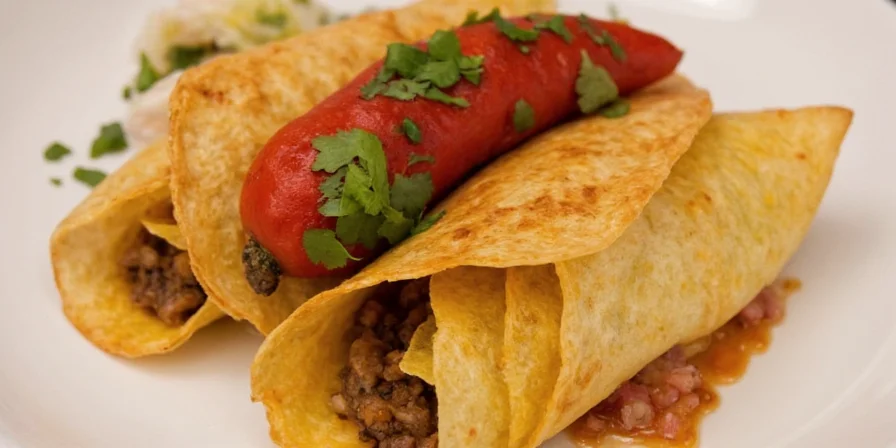Chile Ancho for Tamales: A Flavor-Packed Journey Through Global Spice Traditions
If you've ever bitten into a perfectly steamed tamale and felt that warm, earthy, slightly sweet kick of chile ancho — congratulations, you've tasted the soul of Mexican spice traditions. But how much do you really know about chile ancho for tamales? Whether you're a seasoned chef or a weekend masa maker, this guide will take your tamale game from "meh" to "muy rico."
Table of Contents
- What is Chile Ancho?
- Why Use Chile Ancho in Tamales?
- Tip #1: Soak It Like You Mean It
- Tip #2: Toast for Maximum Aroma
- Tip #3: Pair It with Complementary Spices
- Tip #4: Balance the Heat with Sweetness
- Tip #5: Use Fresh Ingredients
- Tip #6: Don’t Over-Blend Your Masa
- Tip #7: Experiment with Fillings
- A Global Perspective on Spice Traditions
- Final Thoughts
What Is Chile Ancho?
Let’s start at the beginning: chile ancho is the dried version of the poblano pepper. Known for its deep reddish-brown color and wrinkled skin, it brings a complex flavor profile to dishes — think raisin, cocoa, and a whisper of smoke, all wrapped up in a mild heat package.
Why Use Chile Ancho in Tamales?
Tamales are more than just masa and filling — they’re vessels of tradition, culture, and, most importantly, flavor. Chile ancho serves as the backbone of many tamale recipes because it offers:
- A rich, layered taste without overwhelming heat
- Excellent compatibility with lard or vegetable shortening
- Historical roots in pre-Hispanic Mexico
Tip #1: Soak It Like You Mean It
Soaking dried chiles rehydrates them and unlocks their full flavor potential. For best results:
- Use hot water or broth (for extra depth)
- Let them soak for at least 20–30 minutes
- Cover the bowl to trap steam
| Method | Time | Result |
|---|---|---|
| Room temp water | 45+ mins | Passable |
| Hot water | 20–30 mins | Better flavor release |
| Broth + simmer | 15 mins | Supercharged taste |

Tip #2: Toast for Maximum Aroma
Toasting dried chiles before soaking intensifies their aroma and adds smoky depth. Just don't overdo it — 30 seconds per side in a dry skillet should be enough!
Tip #3: Pair It with Complementary Spices
Chile ancho plays well with others. Try these classic combos:
- Cumin + garlic = earthy magic
- Oregano (Mexican style) + cinnamon = warmth overload
- Coriander + cloves = old-world meets new
Tip #4: Balance the Heat with Sweetness
Ancho can lean bitter if not balanced properly. Add a touch of sweetness like:
- Dried fruit (raisins, prunes)
- Honey or piloncillo sugar
- Tomatoes (especially sun-dried)
Tip #5: Use Fresh Ingredients
Freshness matters! Look for:
- Deep red color (not faded brown)
- Firm but pliable texture
- Intense fragrance when toasted
Tip #6: Don’t Over-Blend Your Masa
Over-blending leads to gummy tamales. The ideal masa should feel light and airy, almost like cake batter. Blend in stages and test frequently.
Tip #7: Experiment with Fillings
While traditional fillings like pork in red sauce reign supreme, why not go wild? Consider:
- Vegetarian jackfruit with ancho
- Mushrooms and epazote
- Smoked turkey with mole-inspired filling
A Global Perspective on Spice Traditions
Though we’re focused on chile ancho today, it’s part of a global tapestry of spice use. From Indian curries to Ethiopian berbere blends, spices define cultures and connect generations. In Mexico, ancho peppers are a culinary heirloom — a reminder that flavor is history in every bite.
| Region | Signature Spice | Key Dish |
|---|---|---|
| Mexico | Chile Ancho | Tamales |
| India | Garam Masala | Korma |
| Ethiopia | Berbere | Doro Wat |
| Morocco | Ras el Hanout | Tagine |
Final Thoughts
Mastering the art of using chile ancho in tamales isn’t just about making a tasty snack — it’s about honoring a legacy of spice, storytelling, and culinary craftsmanship. With these seven tips in your back pocket, you’ll be rolling (and eating) tamales that would make your abuela proud — and maybe even start a few family legends of your own.
So grab those corn husks, toast that ancho, and get ready to wrap some seriously spicy history in your hands. And remember — tamales aren’t just food… they’re love, one fold at a time.











 浙公网安备
33010002000092号
浙公网安备
33010002000092号 浙B2-20120091-4
浙B2-20120091-4